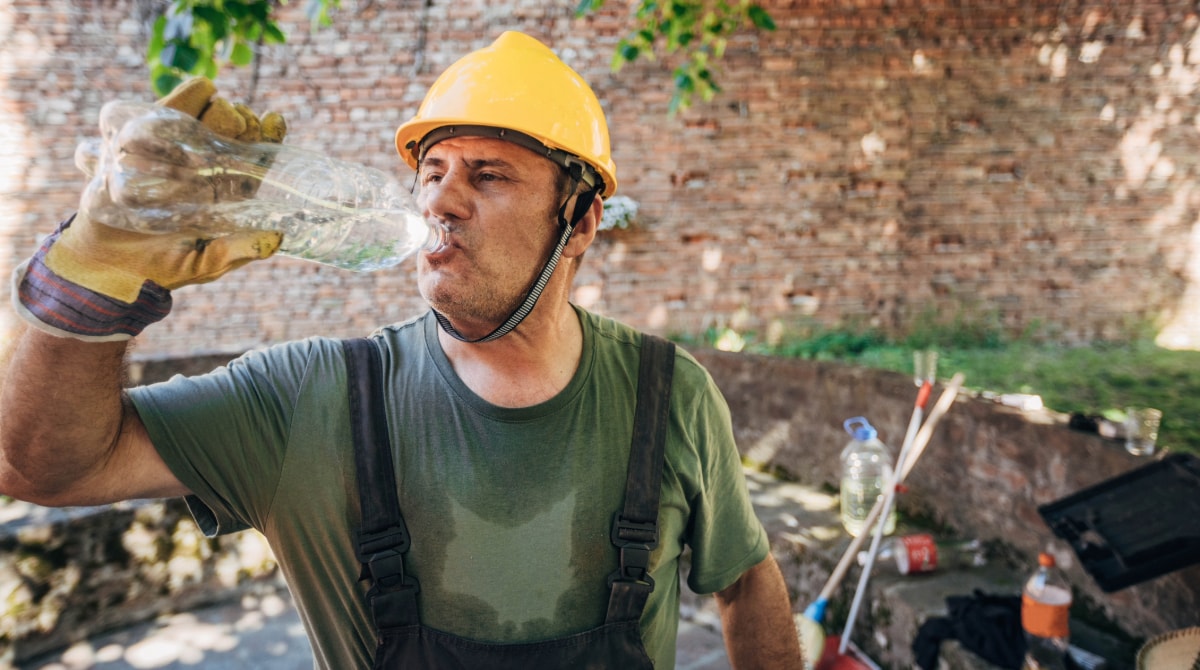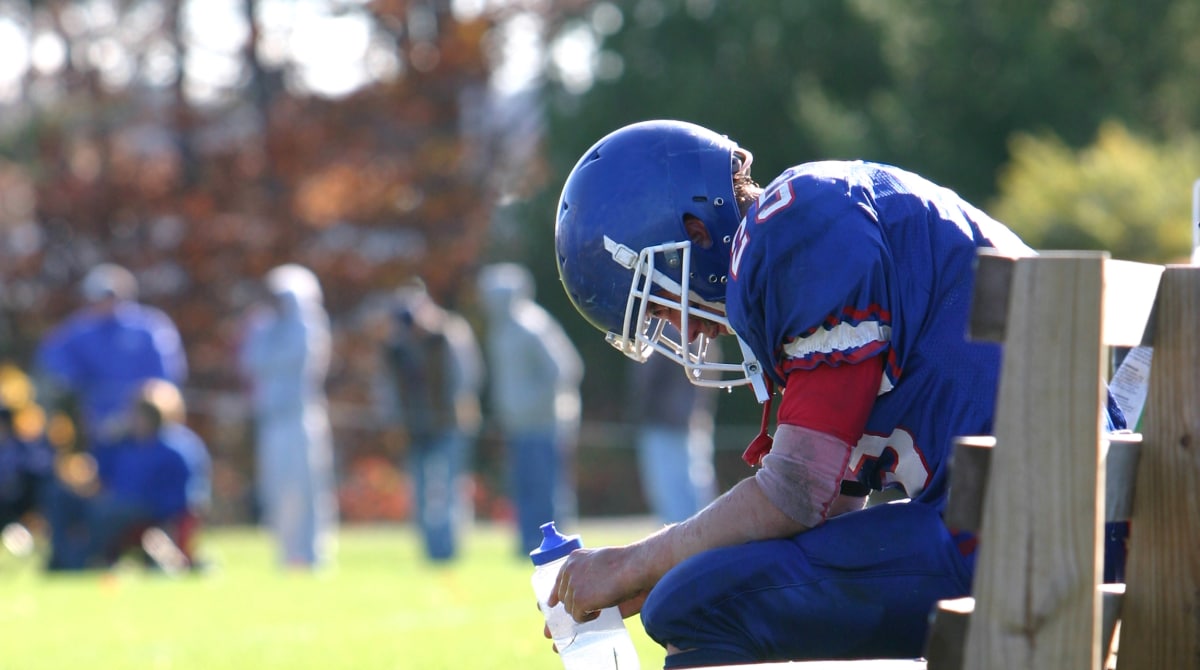Key points
- Rhabdomyolysis (rhabdo) is a serious medical condition that can lead to permanent disability or death.
- Workplace risk factors include heat exposure and physical exertion.
- Rhabdo symptoms can look similar to heat-related illnesses and dehydration; only testing can tell the difference.
- Early diagnosis and treatment can prevent death and disability.

What it is
Rhabdo is a serious medical condition. Rhabdo occurs when damaged muscle tissue releases its proteins and electrolytes into the blood. These substances can damage your organs and lead to:
- Death
- Dangerous heart rhythms (arrhythmias)
- Seizures
- Kidney damage or kidney failure
- Permanent disability
- Nausea and vomiting
Rhabdo can occur from any type of muscle damage. This includes heat, overuse, accidents, or other causes.
Signs and symptoms
If you develop rhabdo, you might have 1 or more of these symptoms:
- Muscle cramps, aches, or pains that are more severe than expected
- Dark urine (tea- or cola-colored)
- Feeling weak or tired, unable to complete tasks or finish a workout you were able to do previously
You can’t tell by symptoms alone if you have rhabdo. The only way to know for sure is to see a healthcare provider. They can order blood tests for creatine kinase (CK), a marker for muscle damage. You need repeated tests to see if CK levels are rising or falling.
Seek medical care
If you have any of these symptoms at any time, do not ignore them. Seek medical treatment right away. Earlier diagnosis means an earlier start to treatment and a greater chance of recovery without permanent health effects.
Risk factors

Anyone can get rhabdo, but some workers are at a higher risk than others.
Workplace risk factors include:
- Heat exposure
- Physical exertion
- Direct trauma (e.g., crush injury from a fall)
Other risk factors
There are also non-work-related factors that can increase your risk. This includes some medical conditions, behaviors, and use of certain medications.
Prevention
Workers and employers can take action to lower workers' risk of rhabdo. Some important steps include:
- Preventing workers from getting overheated
- Encouraging workers to seek medical care when experiencing symptoms
Treatment and recovery
Early treatment can prevent serious medical problems. It also increases your chances of a quick recovery and return to work without any lasting negative health effects.
Workers with symptoms of rhabdo should:
- Stop activity
- Drink more liquids (water preferred)
- Seek immediate care at the nearest medical facility
If heat stroke is suspected, follow these first aid steps.
Myths and misconceptions

It’s a common misconception that only unfit or out of shape people get rhabdo. People in great shape, such as firefighters, marathon runners, and professional athletes, get rhabdo. It can happen to anyone and even after activities you have done in the past without a problem.
People also falsely believe dehydration causes rhabdo. Dehydration doesn't cause rhabdo but it can make it worse. Dehydration impairs the body's ability to get rid of the proteins and electrolytes in the blood stream released from damaged muscle. These proteins and electrolytes cause organ damage.
Related conditions
Heat-related illnesses
Other heat-related conditions, like heat exhaustion and heat cramps, can cause similar symptoms. Learn more about heat-related illnesses.
Compartment syndrome
Compartment syndrome is a painful condition also caused by muscle damage. Some muscles are grouped together inside a thin, fibrous sheath or covering. Swelling from muscle damage inside the sheath can cause pressure to build, because the sheath cannot stretch very far. This swelling and pressure can prevent blood flow to muscles, causing the muscle to die.
Compartment syndrome is not common, but it is important to get immediate medical treatment. Delayed treatment can cause permanent disability.
Resources
See the NIOSHTIC-2 database search results on rhabdo. NIOSHTIC-2 is a database of occupational safety and health publications funded in whole or in part by NIOSH.
